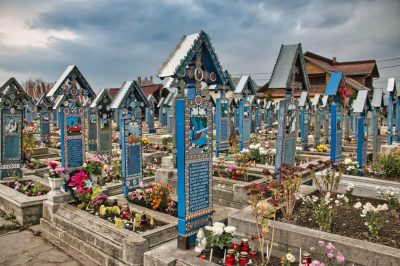The Romanian Brașov, which the Transylvanian Saxons also call Kronstadt, is the second largest city in Transylvania after Cluj. The city is located at the foot of the local mountain Tampa, from which you have a magnificent view of the city. Founded by knights of the Teutonic Order, the city is full of various Gothic and Baroque buildings and even still boasts a functioning Jewish community. The many small streets and the alleged narrowest alley in Europe invite you to stroll.
And from Brasov the Reformation was spread in Transylvania. A somewhat inglorious period for the city was when it was renamed Orașul Stalin (Stalin’s City), after the Soviet dictator. Fortunately, this name lasted only ten years and was abolished again in 1960. The city, which today seems quite young and dynamic, is home to many students and there is a rich cultural life. Reason enough to take a closer look at the many things to do in Brașov.
Old town of Brasov
The old town with its countless things to do in Brașov belongs on every Romania bucket list. The many small streets invite you to stroll. Especially the Strada Michael Weiss with its small cafes and restaurants invites you to linger. Many museums are waiting for your visit and in the souvenir stores you will surely get a nice souvenir from Brasov.

Town Hall and Council Square (Piața Sfatului)
The town hall was built already around the year 1420. For about 500 years the councilors of Brasov sat here, until the city had a new city hall built during the communist dictatorship. Today the building is the city museum and brave people can climb the tower and enjoy the view from here. Around the square there are many guild houses, which testify to the former wealth of Kronstadt. Here used to stand the pillory, where the criminal or considered so citizens of the city were tortured.
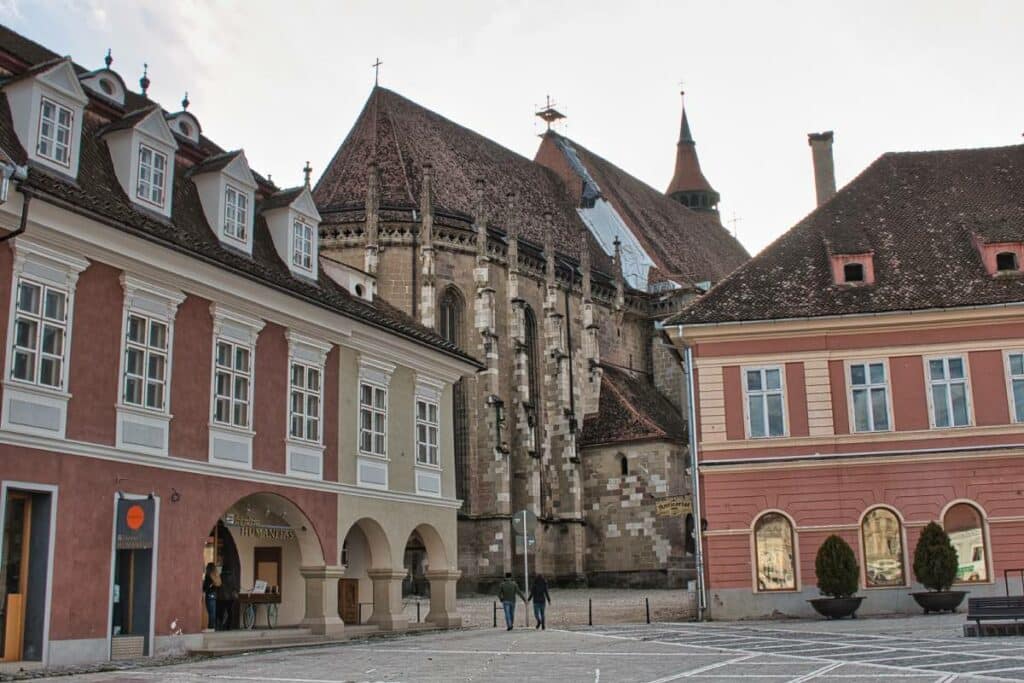
Black Church (Biserica Neagră)
In 1689, almost all of Kronstadt burned to the ground. The “Black Church” was also affected and thus received its present name. Only the soot-blackened walls remained standing at that time. Today, the Gothic hall church is a landmark of Brasov and is considered the largest Gothic church in Romania. Inside, a sonorous organ with 3993 pipes resounds during concerts and you can admire the most impressive carpet collection in Romania.
It was gathered by merchants from Kronstadt all over Europe. A six-ton bell indicates the church service. By the way, since the Reformation the service has been Lutheran, because many of the Transylvanian Saxons became Protestants back then.
Șchei quarter
In the Middle Ages, the first Bulgarian, later Romanian inhabitants of Brasov were not allowed to own property in the Old Town, as it was dominated by Saxon settlers. Therefore, they mostly lived in today’s Șchei, in German Belgerei called quarter, which referred to the Bulgarians who once lived here. The quarter is adorned with small alleys and houses with small gardens.
Catherine’s Gate (Poarta Ecaterinei)
In order to enter the city and sell goods there, the residents of Schei even had to pay an entrance fee, which you can see to this day at the so-called Catherine’s Gate. They were not even allowed to use another gate. Pretty unfair, isn’t it? The gate was built by the tailors’ guild and it also had a defensive purpose. It was named after the local monastery.
Even though today no one has to pay an entrance fee just to get into the old town, the richly decorated gate still makes for some great pictures.
Church of St. Nicholas (Biserica Sfântul Nicolae)
The Church of St. Nicholas is the largest Orthodox church in Brasov and therefore has great importance for many Romanians. Originally, the church was built in Gothic style. Today, however, it stands here mostly in Baroque. It dominates the Schei district and is definitely worth a visit.
First Romanian School (Prima Școală Românească)
In 1583, classes were taught in Romanian for the first time. This was a novelty at that time, because until then Romanians had mainly used Church Slavonic. The students even came from far away, because as the first Romanian school, the school quickly became known. Every village in the region sent a student here.
In return, the students had to share this knowledge with the others from the village when they returned home. The school was operated until 1850. In 1964 the building was turned into a museum and old school objects were collected. The first Romanian letter, the first school book and the first Bible in Romanian were printed on the local printing press. For that alone, a visit to the museum is worthwhile.
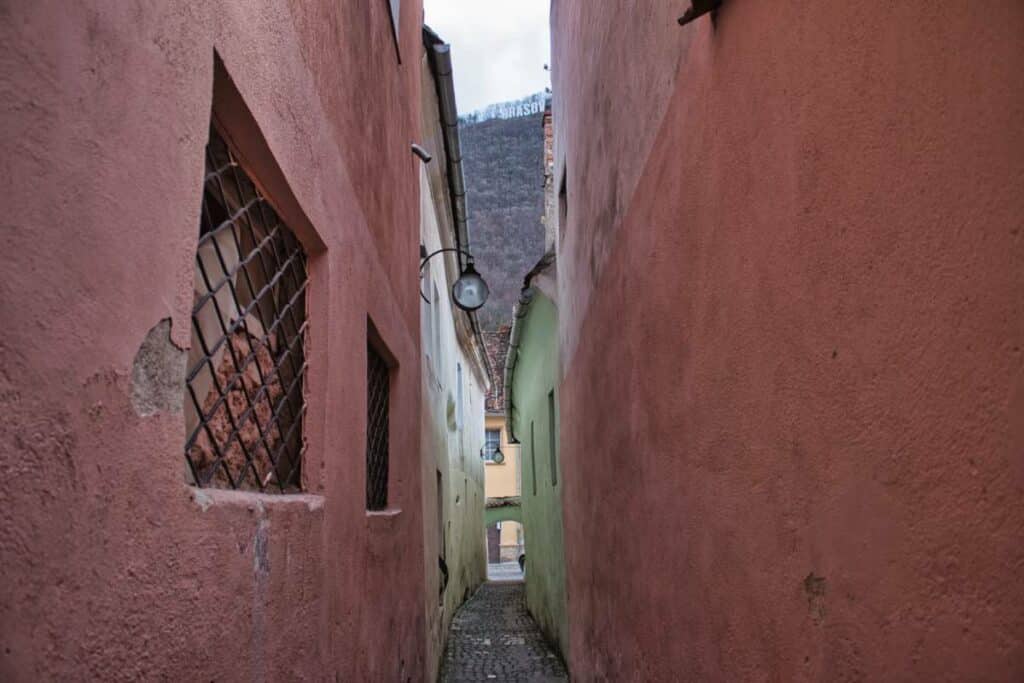
Rope Street (Strada Sforii)
We hope that your breakfast wasn’t that rich, because you’ll have to almost pull your stomach in to fit through Rope Street. With a width of 1.11 to 1.35 meters (3.5 to 4.5 feet), it’s so narrow that two of you can hardly pass each other. On the approximately 80 meters (240 feet) you will come quite close to many people – not exactly corona-safe. Rope Street is thus considered one of the narrowest streets in Europe and is located right next to the Schei Gate, which is right next to St. Catherine’s Gate itself.

Weavers Bastion (Bastionul Ţesătorilor)
Once Kronstadt was surrounded by thick fortification walls. One of the largest such fortifications is the Weavers’ Bastion, which the Weavers’ Guild was responsible for maintaining. It still stands firm today and with its massive 4 meter thick walls it impresses every visitor.
City Wall
During the Middle Ages, the entire city was enclosed by a city wall, which you can still see in part today. Defensive towers and thick walls surrounded the present old town.
Citadel (Cetățuia de pe Strajă Brașov)
The citadel was also part of the city’s defenses and is located a little away from the city center on a hill. It was built between the 16th and 18th centuries by the Habsburgs. It was still used for military purposes until the middle of the 19th century, when it was converted into a prison. Today, the Brasov Citadel is open to visitors as a museum. However, it was closed at the time of my visit. When it would open, no one could tell me exactly.


White Tower and Black Tower (Turnul Alb și Turnul Negru)
The two towers of the former city wall from the 15th century – the Black and the White Tower – served in the Middle Ages as viewpoints of the old town and the surrounding area. Even today it is possible to climb the White Tower and enjoy the view. In the valley in front of it flows a small stream and in general a walk through the neighborhood below is really worthwhile.
Strada Republicii
When it comes to shopping, you are on the promenade Strada Republicii. There are also some chain stores, but in between you will always find small stores with local art or handicrafts. Also in search of a postcard or a fridge magnet, you will also encounter some souvenir stores, where there are some more or less useful knickknacks.
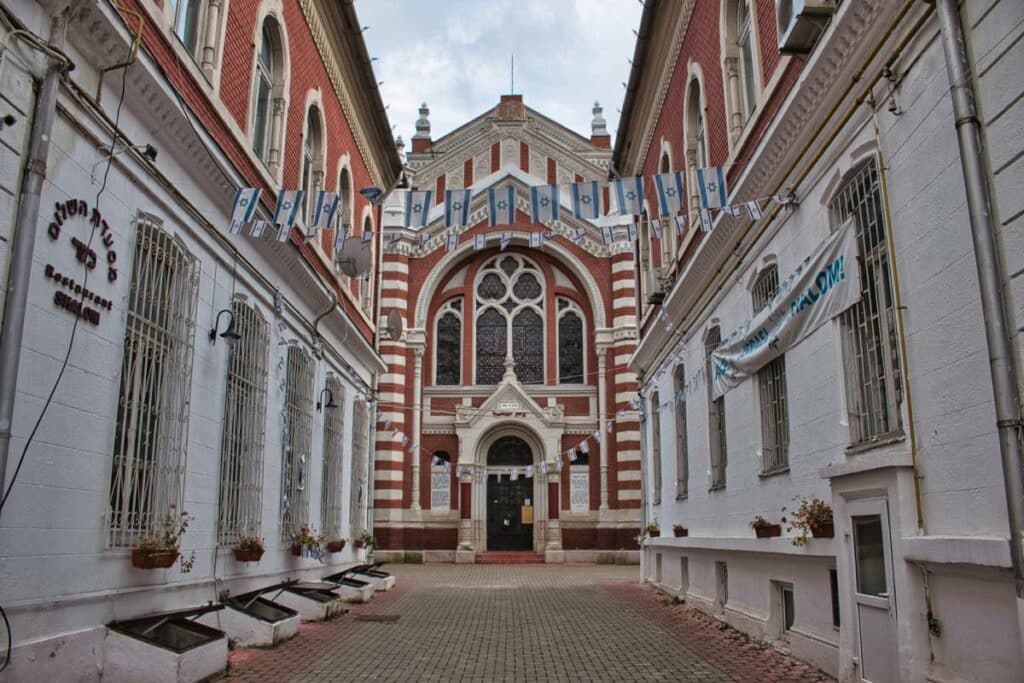
Synagogues of Brasov (Sinagoga Neologă și Sinagoga Ortodoxă)
Brasov still has two synagogues to offer today. The Neological Synagogue is one of the most beautiful synagogues in Romania. It was built from 1899 to 1901 and impresses with its red and white color. Inside, the synagogue is richly decorated but in a very businesslike way. Jews had already lived in Brasov in the Middle Ages but only at the beginning of the 19th century they received the right to settle here. On the site of the Neological Synagogue there is also a kosher restaurant and the seat of the community. The Orthodox synagogue is adorned by a large menorah and two lions, especially on the facade. You can visit both synagogues.
Kürtőskalács
In Prague, it is notorious as tourist food and is considered an imported food. But here in Transylvania, you don’t have to feel bad about eating Kürtőskalács. In fact, it almost certainly comes from Transylvania and is therefore an authentic Transylvanian food. So go ahead and enjoy this rolled-up delicacy, which has been grilled over a fire and then rolled in sugar. We always find it delicious too!
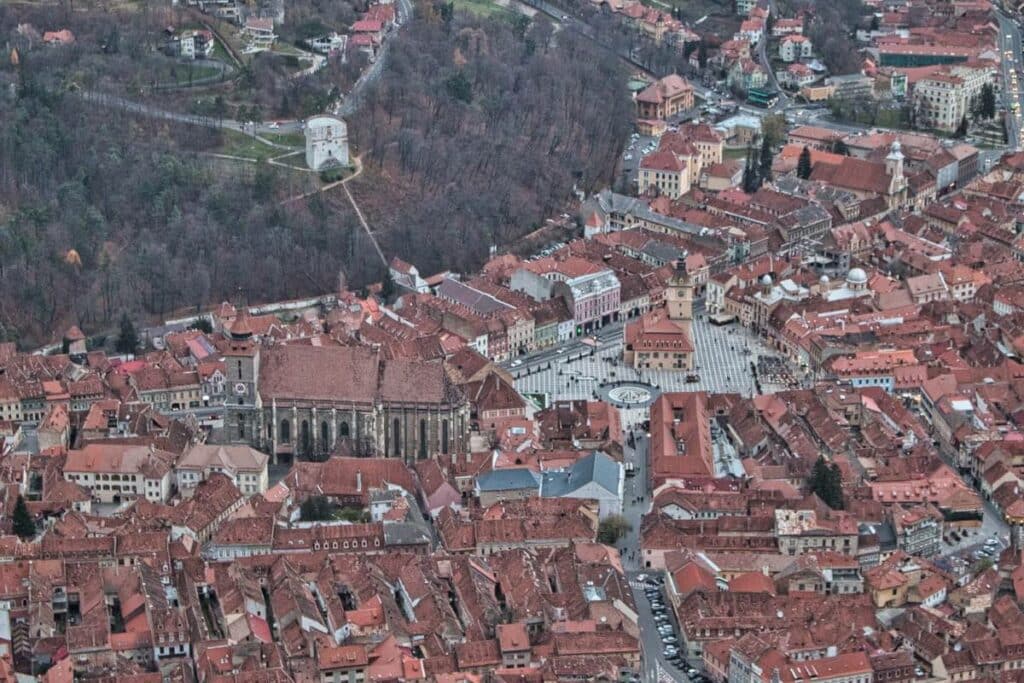
Mount Tâmpa with Brașov sign
One of the most beautiful activities you can do in Brasov, Romania, is to take the cable car to the top of Mount Tampa, which is adjacent to the old town. In just three minutes you are at the top and from here you can enjoy a breathtaking view of the whole valley with Brasov. Up here at an altitude of about 900 meters is also the Brasov sign, which advertises the city in the style of the Hollywood sign. From the cable car exit you can easily walk over here. If you feel like it, you can also hike up the mountain or if you don’t want it to be too strenuous, just walk back instead of using the cable car again. So you can make a nice walk through this nature park.
Poiana Brașov
Which city can claim to have a ski resort directly close by? Well, Brașov can! Because with Poiana Brașov there are about 25 kilometers of slopes at an altitude of over 1000 meters, which you can reach in a few minutes from the city center. There are regular connections by bus to the resort 12 kilometers (7 miles) away. Many slopes even have snow cannons which guarantee you a snow-sure winter. The passes are quite cheap. The price depends on the extent and duration. In summer, hikes through the beautiful mountain landscape are also worthwhile.
Adventure Park of Brașov (Park Aventura)
In Park Aventura you can tickle your nerves a little, because here you have high ropes courses and other adrenaline. Here you can go especially as a family and enjoy a few hours together.
Brașov – Sights in the surroundings
Not only in Brașov, but also in the surroundings of the city there are all sorts of places to see and also a lot to experience. Castles, parks and mountains await your visit.
Bear Sanctuary Zarnesti
More than 90 bears live in the Bear Sanctuary of Zarnesti. After all, with 69 hectares, it is the largest bear sanctuary in Europe and is located only a few kilometers from Brașov. The bears that live here were mainly taken from zoos and from private cages. In the reserve they should live as species-appropriate as possible, because many of them did not fare well in their previous lives with their owners. They had to live in much too small cages and were abused to train dogs or to amuse people.
Therefore, to the sanctuary it is important to note that it is not a zoo, but it is about offering the animals as good a life as possible. Unfortunately, the animals can no longer be released into the wild, as they are already too accustomed to humans. A visit therefore helps to feed the bears.
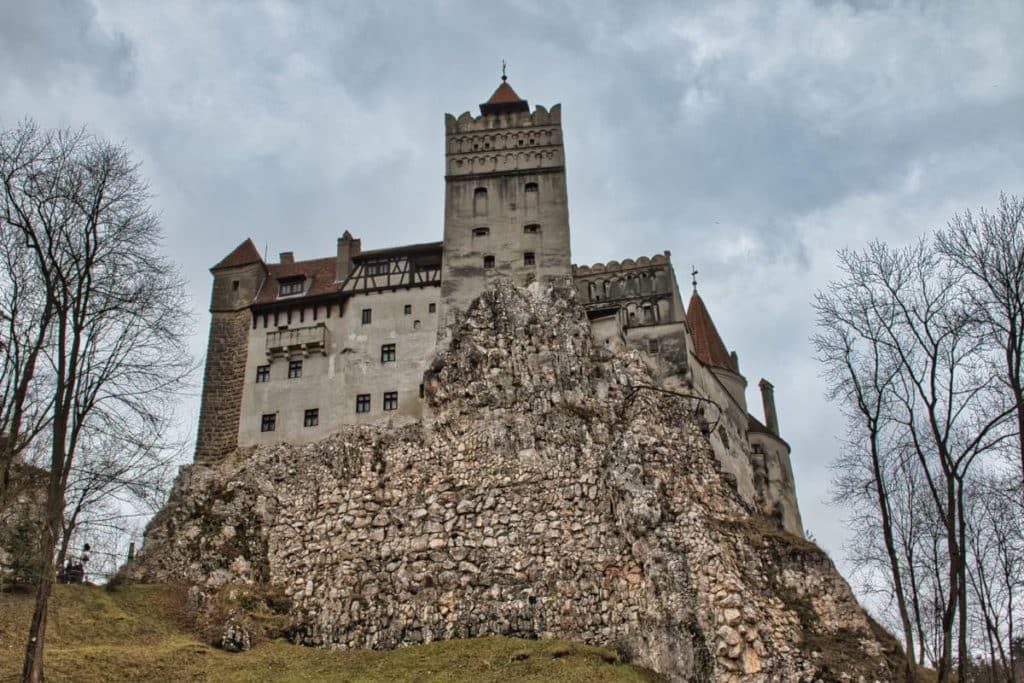
Bran Castle
Not far from Brașov is also the supposed castle of Count Dracula. This magnificent castle stands on a hill in Bran. The fact that the historical figure of Dracula never lived here is not important. However, it is quite possible to live with the myth, because every year hundreds of thousands of tourists come to the small town for this reason. But even if the legend is fiction, the visit to the castle from the 13th century is still worthwhile. You can see how the lords of the castle lived here quite splendidly in the Middle Ages. This is one of the reasons why Bran Castle is one of the most beautiful Transylvanian sights.
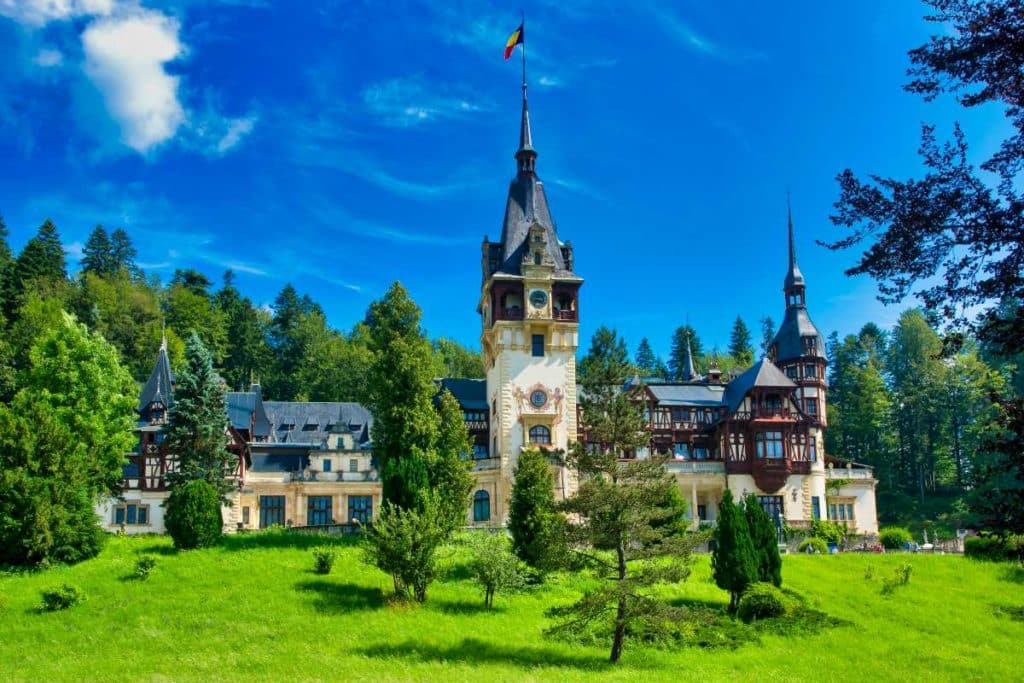
Peleș Castle
South of the city of Brasov in Romania and not far from Bran stands another impressive fairy-tale castle, quite different from Bran Castle, built in the neo-Renaissance style. The magnificent Peleș Castle was built in the 19th century by Austrian and German architects for the Romanian king Carol I. After being transferred back to the original Romanian royal family, the castle has already served as a backdrop for numerous film productions, and for visitors to the region, it belongs on the list of Transylvanian sights you definitely shouldn’t miss. Just 300 meters up the slope is Pelișor Castle, also known as Little Peleș.
Râșnov Fortress
Râșnov Fortress dates back to the 14th century and still towers over the small village. The well is a full 140 meters deep and it is hard to imagine how it was dug here. According to a legend, this was done by two captured Turkish soldiers in 17 years. Allegedly, Koranic verses can still be found on the walls of the well. The interior of the castle is well worth seeing and is a fine example of medieval architecture in the region. Next to the castle there is a dinosaur park.
Our Romania and Transylvania Book Tips
You want to travel to Romania or get to know the country through literature? Then our book tips are just right for you!
No products found.
Transylvania is an incredibly diverse part of Romania and here alone you can spend several weeks of vacation. If you are planning a trip only to Transylvania, the Bradt Travel Guide from is highly recommended.
No products found.
This classic tour guide presents Romania and neighbouring Bulgaria in all its variety.
No products found.
This well written books tells you everything you need to know about Romania’s troubled history.
No products found.
Who was the real Count Dracula? This book tells you what he was really like!



